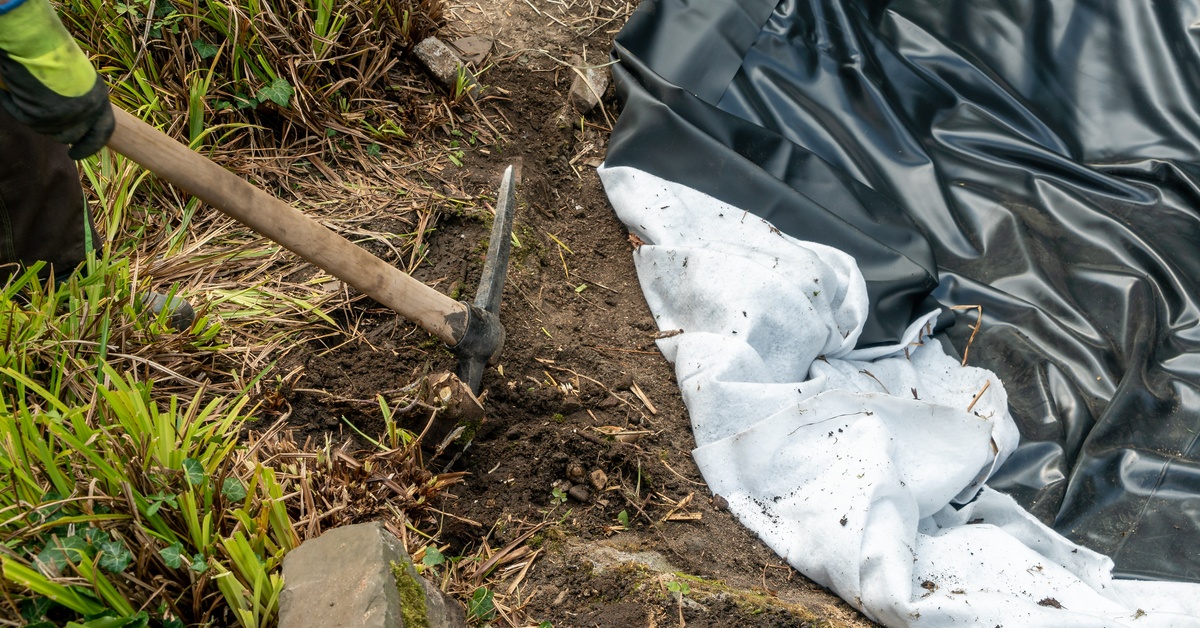Soil erosion happens when water, wind, and human activities strip away the topsoil, making land unusable and exposing it to further degradation. Fortunately, geomembrane liners offer an effective solution to common erosion issues. Here’s a breakdown of how geomembrane liners help prevent soil erosion.
Barrier Against Water Erosion
Water erosion happens when rain, runoff, or floods strip soil away, especially in areas with steep terrains or unstable ground. Geomembrane liners prevent this damage by providing an impermeable shield that stops water from washing away the soil below.
For example, in stormwater management projects, these liners hold water within designated areas, preventing overflow and displacement of the land. Similarly, they protect agricultural fields by controlling runoff, which otherwise could ruin nearby landscapes.
Geomembrane liners also shine in lake lining applications. By reinforcing the soil beneath artificial lakes and reservoirs, liners stop water seepage that erodes the substrate. The liners create a stable foundation while maintaining water levels.
Protection Against Chemical Erosion
Chemical erosion happens when industrial runoff or pollutants break down soil, impacting vegetation and contaminating the surrounding environment. Geomembrane liners form a protective barrier, keeping harmful chemicals from seeping into the soil and degrading its quality.
Consider areas near factories or chemical storage facilities. Geomembrane liners help to create a safe separation between the soil and the hazardous substances found in these facilities, keeping the ground viable for future use.
Prevention of Subsurface Soil Erosion
Sometimes, water seeps underground, causing erosion beneath the surface. This soil displacement happens when rainwater infiltrates deeply, loosening soil particles and weakening the ground’s foundation.
Geomembrane liners address this by completely blocking water infiltration. They prevent subsurface soils from shifting, which is especially important in infrastructure projects, such as road construction, where stability is nonnegotiable.
Take landfills, for example. Geomembrane liners minimize subsurface erosion by preventing rainwater or contaminants from moving into the soil beneath. This protects the structural integrity of the landfill as well as neighboring lands.
Control of Wind Erosion
Wind can blow away topsoil, leaving areas barren, dry, and incapable of supporting vegetation. This problem hits arid regions hardest, where sandy soil and winds combine to accelerate erosion. Geomembrane liners help prevent soil erosion here by anchoring loose soil, thus preventing it from scattering under windy conditions.
Dust and debris also create challenges on mining sites, with wind spreading loose particles far and wide. Geomembrane liners fix these issues by covering loose soil deposits and shielding the land from erosion.
Reinforcement and Stabilization of Weak Soil
Some soils lack the natural strength to support slopes, heavy loads, or infrastructure projects. Geomembrane liners offer reinforcement by boosting the stability of these areas. They combine with geotextiles to create a durable system that strengthens soil and keeps it from breaking apart under pressure.
Slope reinforcements using geomembrane liners can benefit road construction and landscaping projects. These materials on highways or construction sites protect the ground and ensure long-term durability for the soil as well as the structures above.


